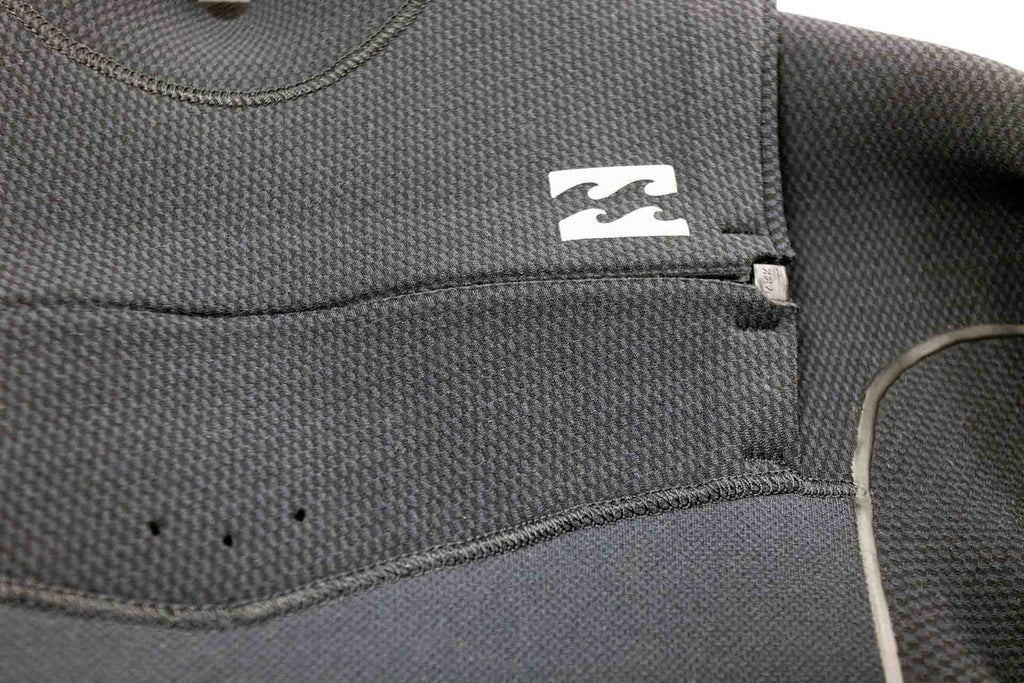There are many different neoprenes out there, and they play a large role in the overall performance of a wetsuit. The best neoprene is insulating, lightweight, stretchy, durable, and hydrophobic (making it absorb less water). The entry-level neoprene used in wetsuits these days is better than the top-of-the-line neoprene used in suits from the distant past, and it is very functional.
Types of Neoprene
Nylon-Lined Neoprene

Traditional wetsuit neoprene is lined with a nylon jersey, which is done for a number of reasons. Nylon slides against the skin much easier than pure rubber neoprene, making suits much easier to get on and off. Back in the day, when nylon neoprene did not exist, surfers used talcum powder to help them slide into their wetsuits. Also, the nylon adds an extra layer of protection for the neoprene, which prevents it from drying out from the sun, cracking, splitting, and general wear and tear.
Smooth Skin Neoprene

Some wetsuits and wetsuit accessories like boots, gloves, and hoods will use smooth skin neoprene. This neoprene has a rubbery finish that repels water and wind while absorbing heat from the sun and trapping in extra body heat. On cold water wetsuits, you find smooth skin in the chest panel and the lower back (over the kidneys), which greatly increases the overall warmth of a wetsuit, especially on a windy and sunny day. One drawback of smooth skin neoprene is that it is less durable and is especially prone to be torn by fingernails when getting in and out of a suit.
Air Neoprene

To boost the warmth of wetsuits without making them too thick, wetsuit companies created a fabric sandwich that includes a middle layer of perforated neoprene to trap air. The tiny air pockets insulate the body with dead space in the same way that double-paned windows insulate a house. Generally, you will only find this neoprene in high-end wetsuits.
Yulex

Yulex is a plant-based neoprene alternative originally developed by Patagonia. It shares similar warmth and flexibility characteristics as neoprene but has a much smaller carbon footprint, can be sustainably reproduced, and is more environmentally friendly.
Yamamoto Neoprene
One of the most premium neoprene on the market, Yamamoto is made from limestone sources from the mountain ranges of Japan. With a dense feel to it, Yamamoto is known for its high rate of 99.7% water impermeability, making it incredibly warm and durable.
Jersey Neoprene
Leading brands such as O’Neill started using jersey neoprene in the arms and shoulders of their high-performance wetsuits. This type of neoprene is incredibly lightweight and has next-level stretch capabilities.
A Few Specific Neoprenes by Manufacturer
- Technobutter by O’Neill
- E5 Neoprene by Rip Curl
- Yulex by Patagonia
- SMART Foam by Billabong
How Does Neoprene Affect Wetsuit Flexibility?
Wetsuit neoprenes come in many levels of stretch. Each manufacturer has their own proprietary neoprenes, and the best way to know which is the stretchiest is to feel it for yourself or ask someone who knows from experience.
How Does Neoprene Affect Wetsuit Warmth?
Different types of neoprene can be more wind resistant, especially smooth skin neoprene, which is very much so, and this greatly increases warmth by mitigating wind chill. Air insulated neoprenes are more expensive but also are warmer due to increased insulation.
How Does Neoprene Affect Wetsuit Durability?
As a rule of thumb, you could say that the stretchier the neoprene is, the less durable it is. This isn’t always 100% the case, but you might find some high-end wetsuits that are really durable and wonder why they aren’t as stretchy as less expensive wetsuits. This is because the manufacturer decided to gear the suit a bit more towards durability than other suits on the market. One more thing to note is that smooth skin neoprene is prone to ripping when tugged on, especially with fingernails.
How Does Neoprene Affect Wetsuit Fit?
The only way that neoprene can affect the fit of a wetsuit is by having increased or decreased flexibility. The more flexible, the better the fit.

What Our Customers Are Saying